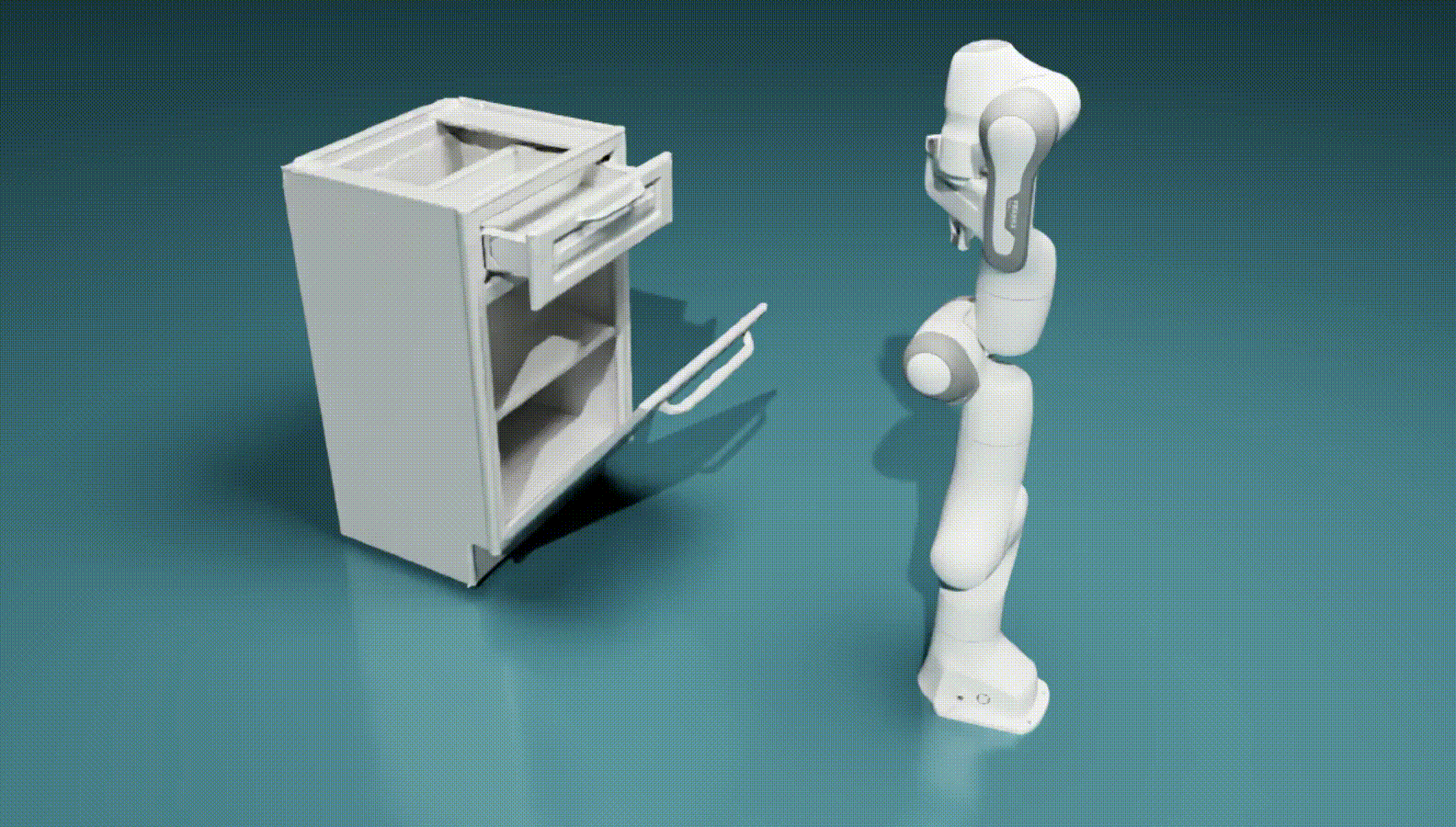Neural Implicit Representation for Building Digital Twins of Unknown Articulated Objects (CVPR 2024)
Yijia Weng, Bowen Wen, Jonathan Tremblay, Valts Blukis, Dieter Fox, Leonidas Guibas, Stan Birchfield
We tackle the problem of building digital twins of unknown articulated objects from two RGBD scans of the object at different articulation states. We decompose the problem into two stages, each addressing distinct aspects. Our method first reconstructs object-level shape at each state, then recovers the underlying articulation model including part segmentation and joint articulations that associate the two states. By explicitly modeling point-level correspondences and exploiting cues from images, 3D reconstructions, and kinematics, our method yields more accurate and stable results compared to prior work. It also handles more than one movable part and does not rely on any object shape or structure priors.
git clone --recursive git@github.com:HalfSummer11/artnerf.gitWe recommend using Anaconda to manage dependencies. Run ./env.sh to install all dependencies in a dedicated conda environment artnerf. Our code has been tested on Ubuntu 20.04, CUDA 11.3.
bash env.shPlease download our preprocessed, depth-augmented version of PARIS two-part object dataset and our synthetic multi-part object dataset and unzip them into ./data under project root.
artnerf
├── data
│ ├── paris
│ │ ├── [instance]
│ │ └── ...
│ └── multi-part
│ ├── [instance]
│ └── ...
We provide 2D pixel matches generated with LoFTR under each instance folder ${dataset}/${instance}/correspondence_loftr/no_filter. You could also generate them from scratch.
To start with, follow the instruction in LoFTR and download their model weights into external/LoFTR/weights.
Run the following to generate pixel matches for ${dataset}/${instance}.
cd preproc
python gen_correspondence.py \\
--data_path ../data/${dataset}/${instance} \\
--output_path ../data/${dataset}/${instance}/correspondence_loftr \\
--top_k=30Run the following to reconstruct an articulated object from ${dataset}/${instance}.
python main.py \\
--data_dir data/${dataset}/${instance} \\
--cfg_dir config/release/ \\
--num_parts ${num_parts} \\ # 2 for paris two-part objects, 3 for synthetic multi-part objects
--save_dir runs/exp_${dataset}_${instance}
# --denoise # enable denoising for real instances including paris/real_storage and paris/real_fridgeCheckpoints and reconstructions will be written to runs/exp_${instance}. Final results can be found in runs/exp_${instance}/results/step_0004000, including reconstructed part-level meshes (e.g. init_part_0.obj), axis meshes (e.g. init_axis_0_revolute.obj), and quantitative evaluations in all_metrics.
You could also download our pretrained checkpoints and unzip them into ./runs under project root.
Run the following to generate a reconstruction from the checkpoint.
python main.py \\
--data_dir data/${dataset}/${instance} \\
--cfg_dir config/release/ \\
--num_parts ${num_parts} \\ # 2 for paris two-part objects, 3 for synthetic multi-part objects
--save_dir runs/pretrained_${dataset}_${instance} \\
--ckpt_path runs/pretrained_${dataset}_${instance}/ckpt/model_latest.ckpt \\
--test_only
# --denoise # enable denoising for real instances including paris/real_storage and paris/real_fridgeEvaluations are automatically run after each reconstruction. Results are written to both the terminal and all_metrics in the corresponding results folder. You may also run the following to evaluate both the geometry and joint parameters of the predicted reconstruction (e.g. in ${exp_dir}/results/step_0004000) offline.
python eval/eval_results.py --gt_path data/${dataset}/${instance}/gt --pred_path runs/${exp_dir}/results/step_${step_cnt}@inproceedings{weng2024neural,
title={Neural Implicit Representation for Building Digital Twins of Unknown Articulated Objects},
author={Yijia Weng and Bowen Wen and Jonathan Tremblay and Valts Blukis and Dieter Fox and Leonidas Guibas and Stan Birchfield},
booktitle={CVPR},
year={2024}
}
This implementation is based on the following repositories. We thank the authors for open sourcing their great works!

